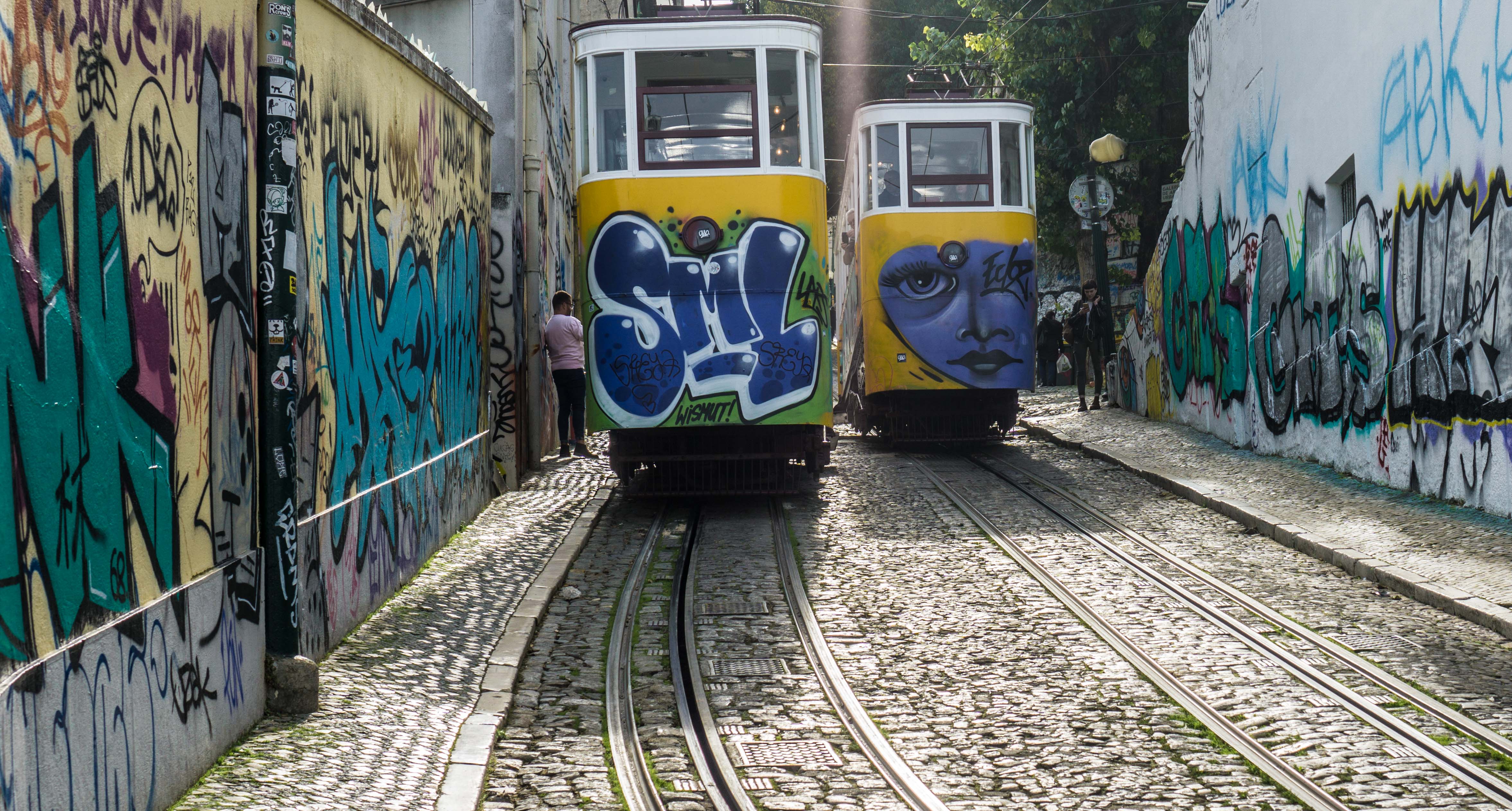Lisbon (Lisboa in Portuguese) is Europe’s second oldest capital after Athens and is a city built upon seven hills. While steep hills and stair climbs are inevitable, even on a short walk, the city rewards those who are willing to venture up and down the hills and climb the dizzyingly steep staircases. The highest places throughout the city provide vast views of the city below: showing off the effortless blend of old and new and the pastel-coloured buildings dotted around the city in pretty shades of pink, yellow, orange and blue. Up high, the city reminded me of San Francisco, but down on the streets, it is unmistakably European.
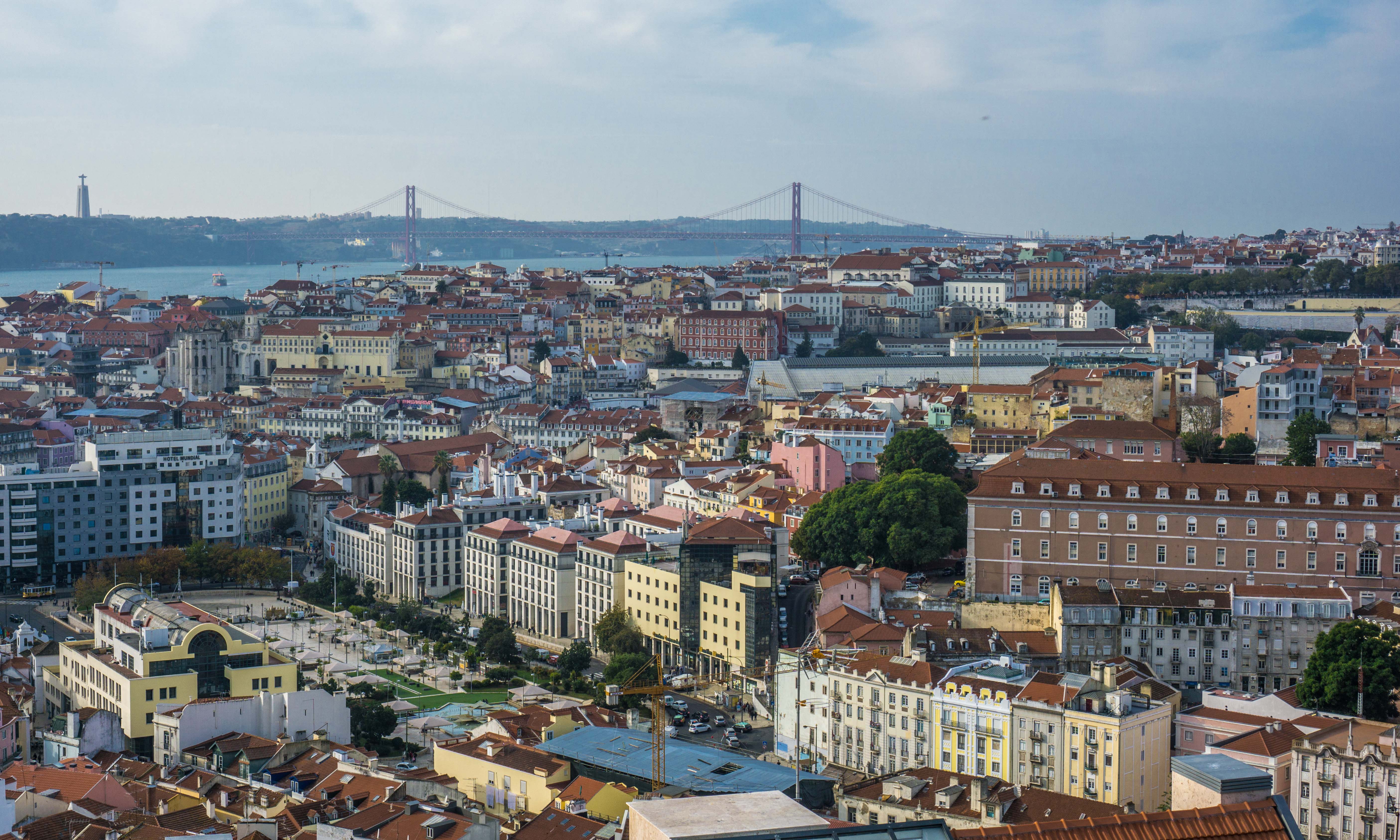
A view from Miradouro da Nossa Senhora do Monte
Every footpath in the city is made of individually hand-crafted little squares of white stone, which while pretty, should really come with a “slippery when wet” warning. The doorways are unique works of art and the façades are adorned in decorative ceramic tiles, laundry hangs from balconies, and the narrow cobblestoned streets are criss-crossed with tram tracks.
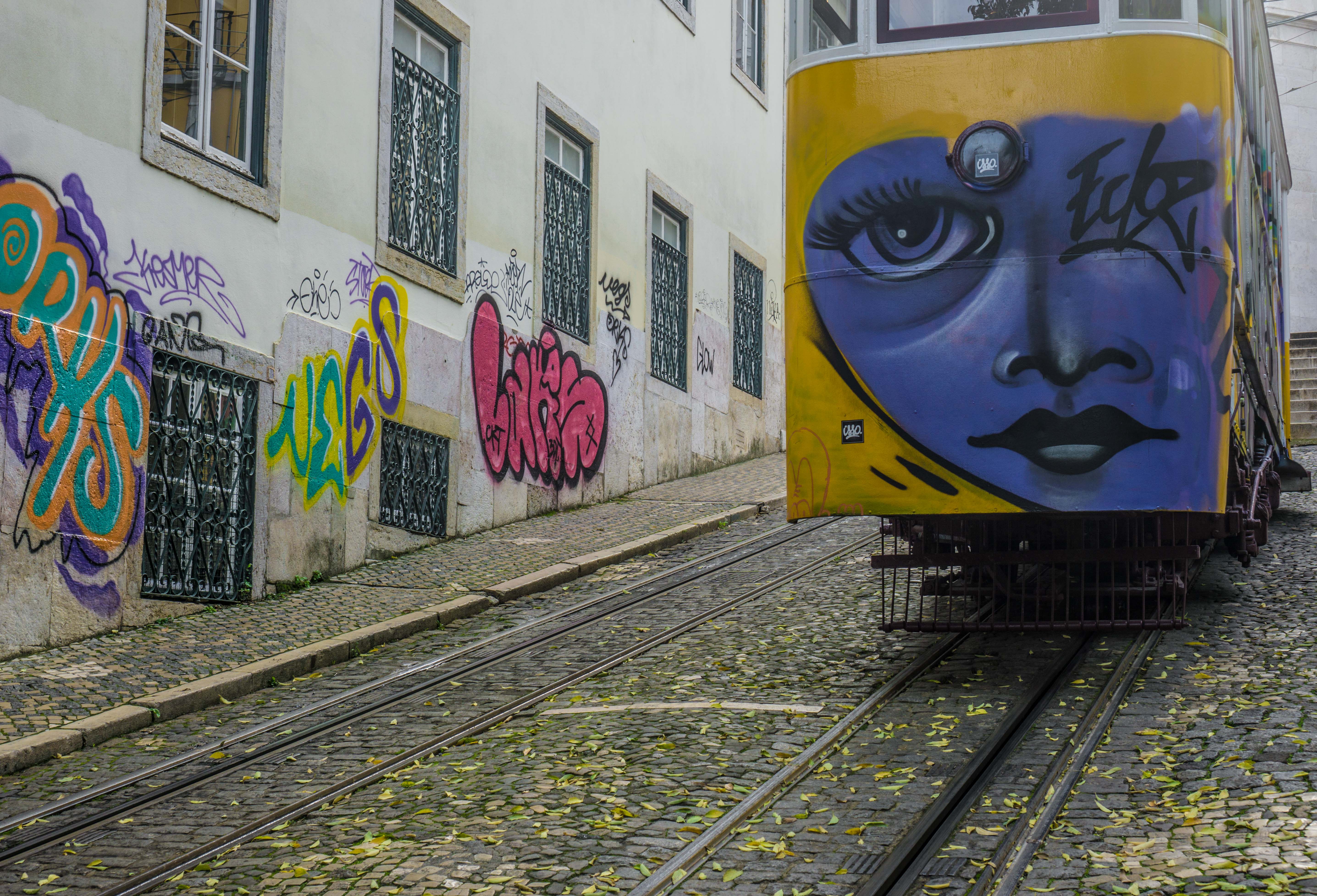
The trams themselves are a sight to see. They are old and rickety and in the oldest parts of the city, they rumble down impossibly narrow streets lined with the pastel-coloured buildings, leaving hardly enough space for a person, let alone a car, to pass by.
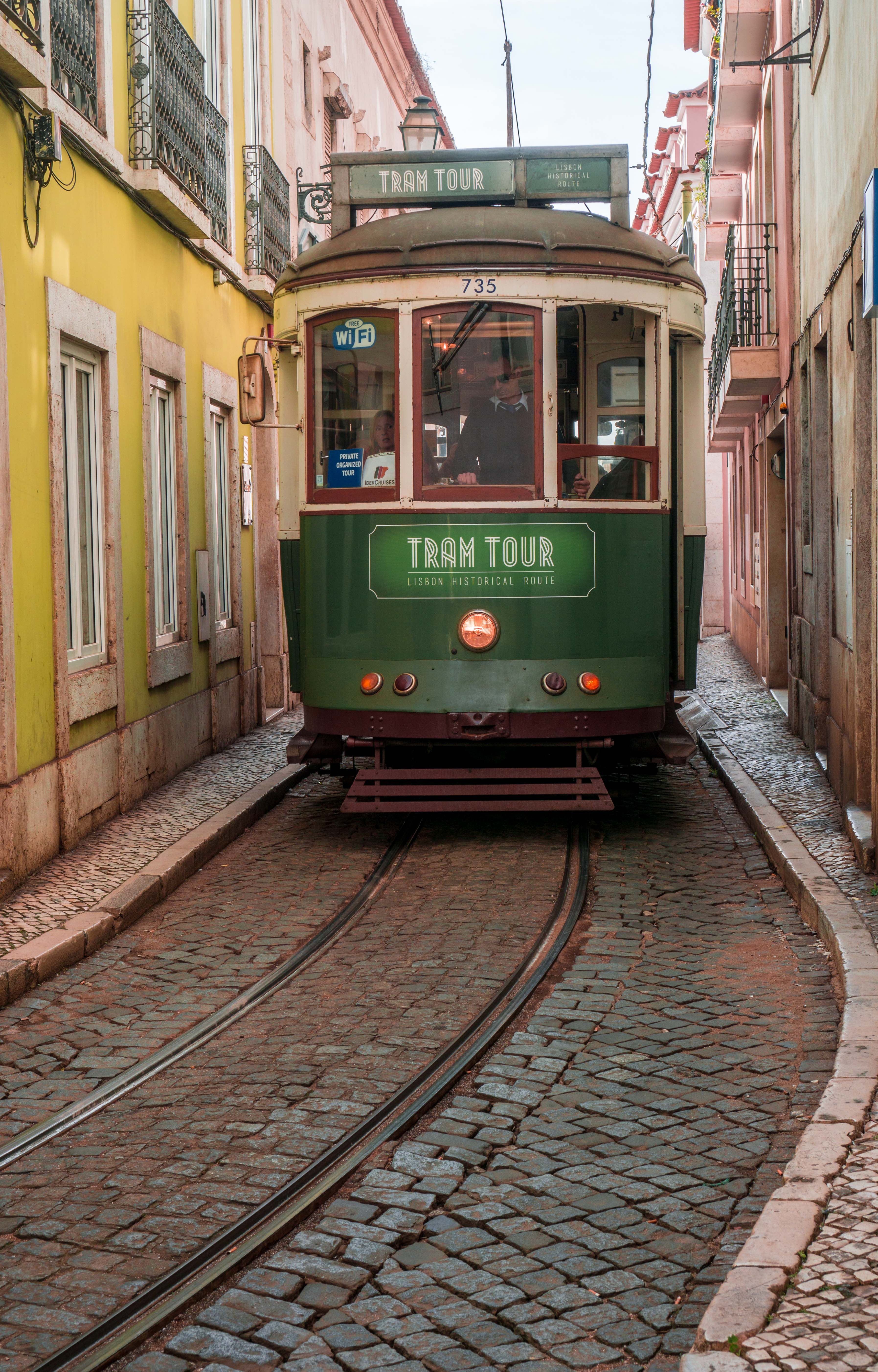
Our Airbnb was located on one of these extremely narrow, steep streets, but even it was too narrow for trams. It was tucked away from the bustling city but at the same time still in the middle of it all, close by to nice cafés offering quality coffee and restaurants serving local cuisine.
There weren’t any trams directly near our apartment, but a short walk away was the Ascensor da Glória — two graffitied trams connecting the Avenue da Liberdade with the nightlife neighbourhood of Bairro Alto. The tram ride is a short distance, but the road is incredibly steep, and in the wet, very slippery, so the walk down in particular takes much longer than you would think. But it’s a great street to walk. The walls are covered in amazing street art, and together with the graffiti-clad trams, it’s one of the most interesting streets in the city.
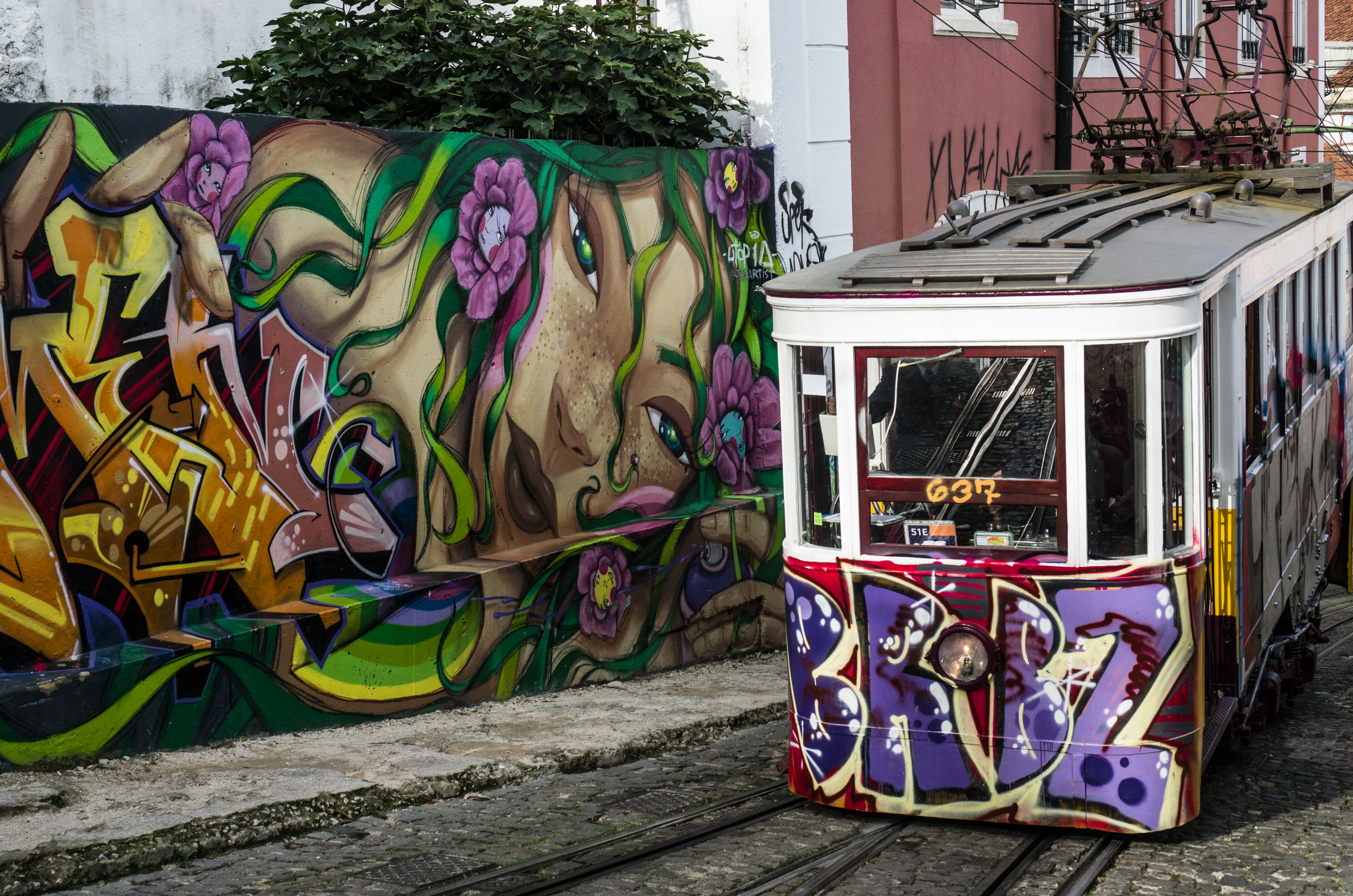
The street art and graffitied trams along Calçada da Glória
Our time in Lisbon was very social. We met up with Dylan’s work colleagues who live in Lisbon. They took us to a local restaurant and some of the best cocktail bars in the city. Our friends Caitlin and Sam also joined us from the UK for an extended long weekend, which principally involved drinking, eating and climbing the hills to find the next place to eat and drink.

Dylan, Sam and Caitlin descending a hill in search of food
In Lisbon, there is no shortage of quality local restaurants and wine bars. The highlights were a small local restaurant called Taberna Sal Grosso, located in the famous sea-side neighbourhood of Alfama, and a hidden gem located right by our Airbnb called Sr. Lisboa. The local cuisine has a lot of meat dishes as well as seafood, especially cod and octopus. All the wine is local, and of course, the port as well. We enjoyed some local wine in a lovely wine bar called By the Wine, which was decorated like a wine cellar with empty bottles creating an arch from floor to ceiling.
At many of the restaurants, at the completion of your meal, the waiter will bring bottles of liqueurs and port to the table to pour your choice of digestif. But they leave the bottles on the table so that you can pour your own glass (or more), and it’s all gratis. We even had this given to us when we stopped at a bar for a drink while waiting for a table at Sal Grosso, even though we only ordered one drink each.
One of the food highlights of Lisbon is the Time Out Market. It’s a large indoor food hall that has food stalls all around the outside and communal seating in the middle. The 40 or so spaces are a collection of the best food, chefs and restaurants from Lisbon, and the meals are served on proper crockery, with silverware and a glass of wine. There is also a separate bar. After a tiring morning of walking the city’s hills, we spent an afternoon here, enjoying the food and relaxing by the bar for a few drinks.
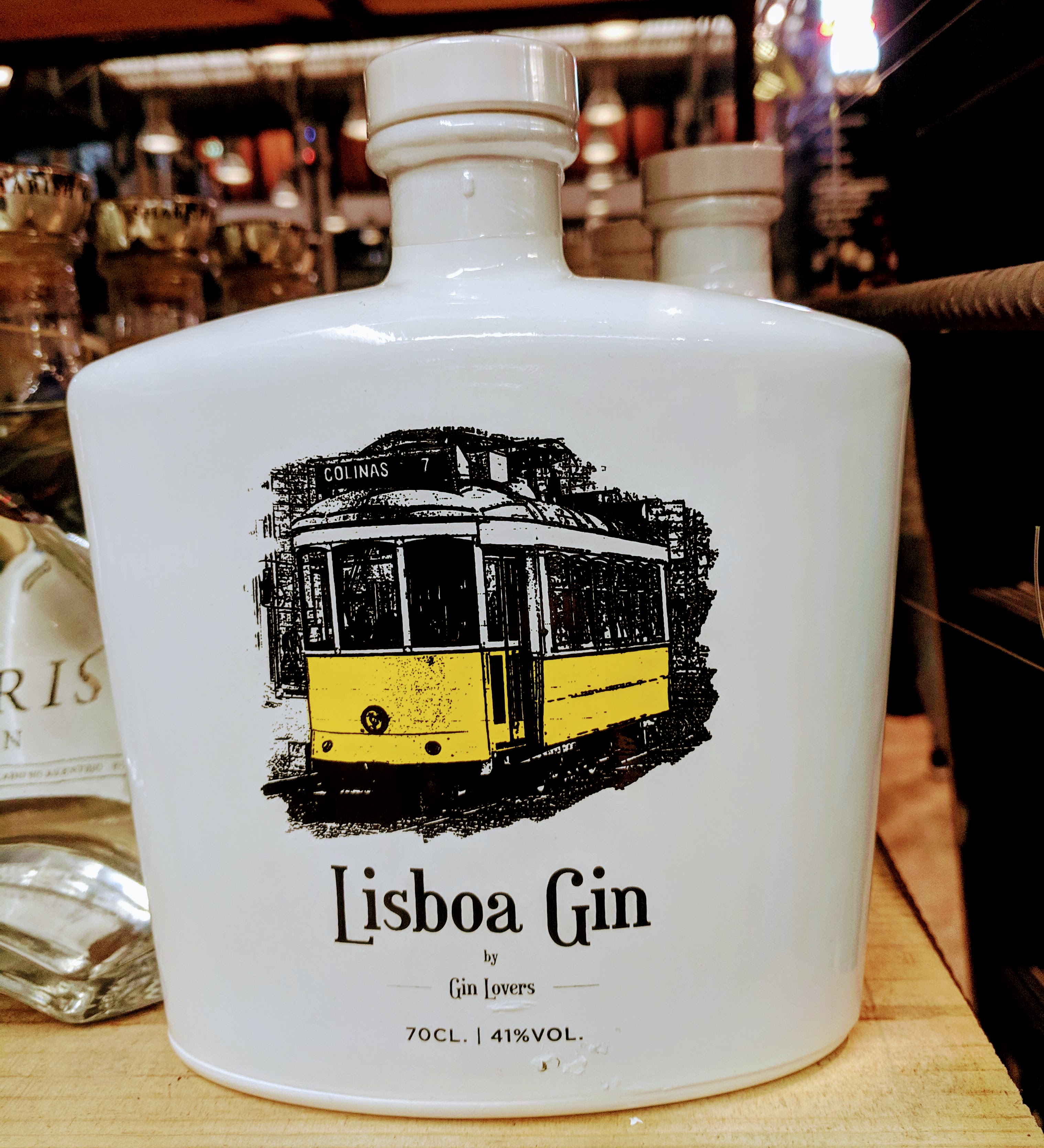
Lisbon gin for sale at the Time Out Market
We had waited until we were here to try our first pastel de nata (Portuguese egg tart pastry) from Manteigaria, which is known as the best place for tarts in Lisbon. It was definitely worth the wait.
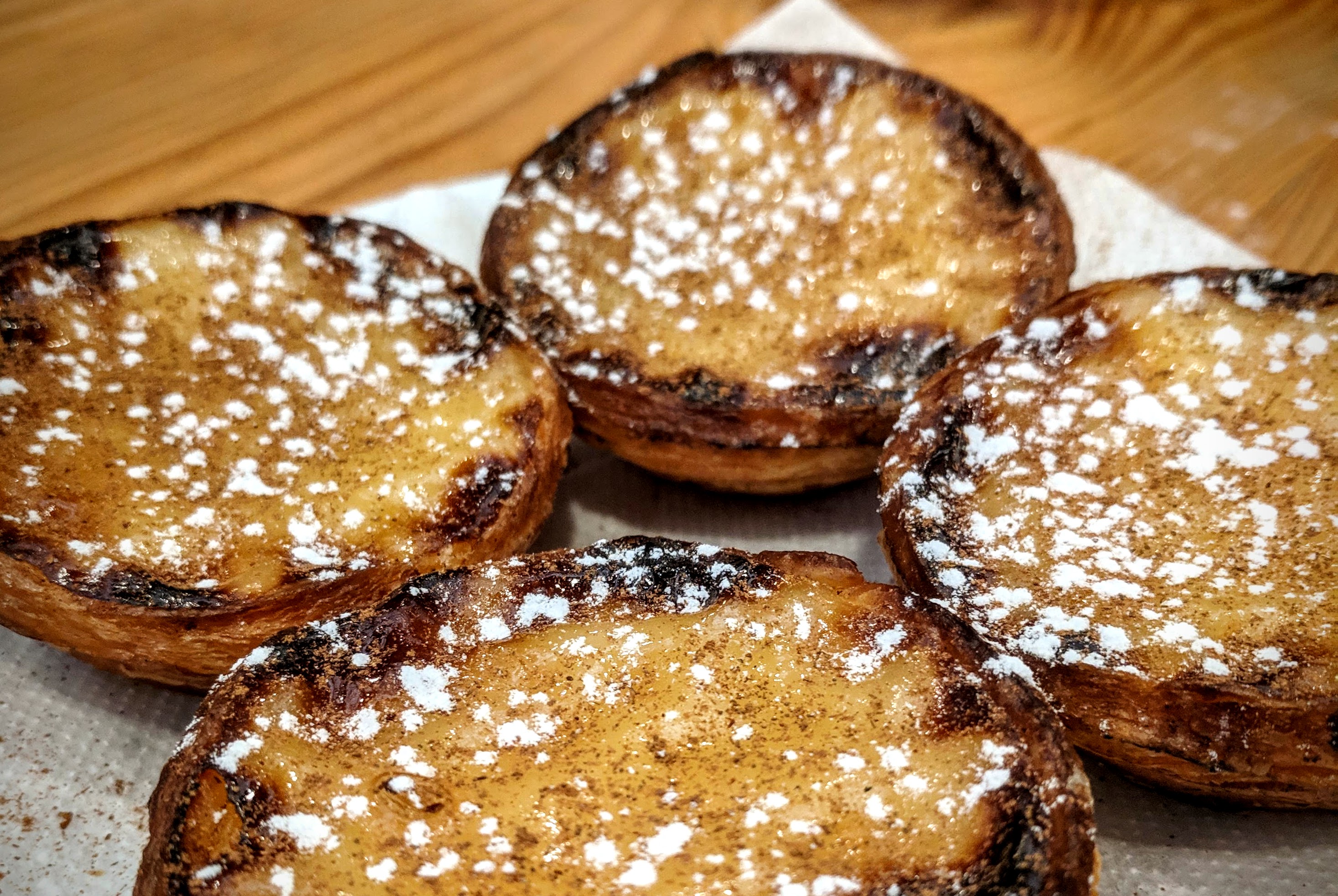
Some pastel de nata from Manteigaria
The pastry is flaky and sweet, the inside warm and gooey, the top is caramelised and finished off with a light dusting of cinnamon and icing sugar. It’s just an explosion of flavour and textures and is all gone in about 4 bites. And they only cost €1 each. On another day, we also went to the original Manteigaria shop in the Bairro Alto neighbourhood where we ate more pastel de nata while watching the chefs make them. Another necessary food stop was at Landeau Chocolate, which is known for having one of the best chocolate cakes in the world. By this point, we had definitely overindulged.
Atop one of the hills overlooking the historic centre of Lisbon is Castelo de S. Jorge — an 11th century Moorish castle and royal residence. It is now mostly in ruins, in part due to its age, and in part due to the earthquake in Lisbon in 1755, which destroyed large parts of the city. However, the exterior wall is well preserved and the path around the fortified wall provides another spectacular hilltop view of the city below.
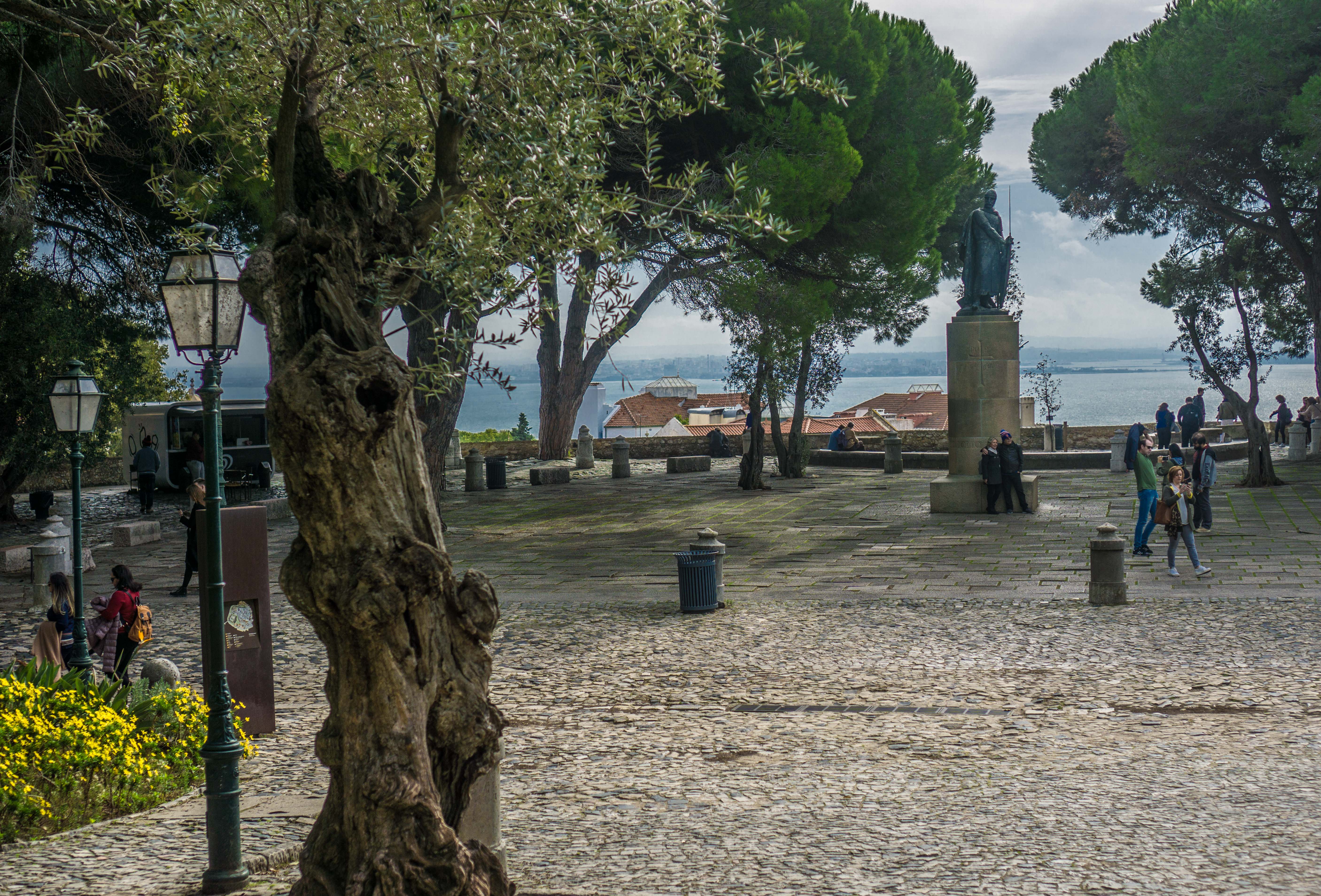
At the Castelo De S. Jorge
The town of Sintra, located less than an hour from Lisbon at the foothills of the Sintra mountains, is well-known for its whimsical castles and palaces. Unfortunately I ended up bedridden for our last two days in Lisbon so I wasn’t able to go with the others to visit Sintra. But perhaps more importantly, I had also eaten my last pastel de nata without knowing it would be my last.
Not yet recovered, I had to pull myself out of bed to pack up and take our flight to Vienna, where now — after a further 3 days in bed, a visit to the doctor, the radiologist and a concoction of medication — I’m finally feeling well again. Thank goodness for the English-speaking Viennese medical profession!
